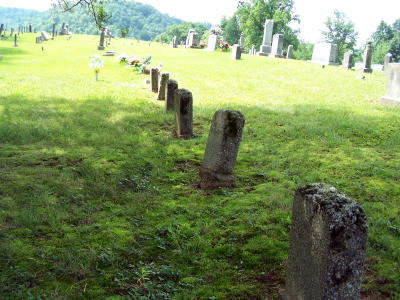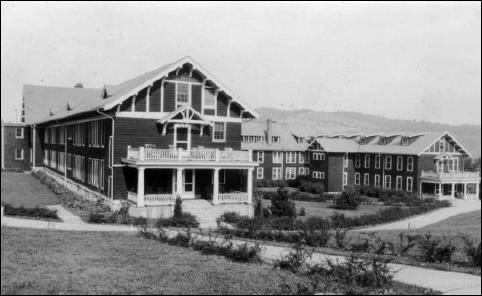TUBERCULOSIS TOOK HEAVY TOLL ON CALHOUN CITIZENS

Six or more of Norville and Mary Propst Ball's children died on Pine
Creek from Tuberculosis, all buried in a row in St. Paul's Cemetery
By Bob Weaver
Tuberculosis took a toll on Calhoun's rural population, surging several times during the first half of the 1900s and killing several hundred citizens.
TB has been found in 4,000 year old mummies, and until "modern times" there was little treatment or prevention.
Many Calhoun residents ended up in sanitariums in the mountains of West Virginia, isolating them from family and neighbors, also with a belief that mountain air helped them.
In Calhoun's St. Paul Cemetery, high on a hill above Pine Creek, there are at least six small monuments erected for the Ball family, all victims of TB.
Anti-tuberculosis drugs were not discovered until 1944, a major break through. In the early part of last century, many Calhouners died, while many managed to recover.
The World Health Organization declared TB a global health emergency in 1993, but children in the US have received a vaccine to protect them.
Norville and Mary Propst Ball, married in 1903, had a large family and lived in a tiny house at the head of Pine Creek. TB affected nearly all the Ball family, likely drinking from a communal water bucket with dipper, while living in close quarters.

Many Calhoun TB victims went for extended stays, sometimes
more than a year, to Hopemont Sanitarium near Terra Alta